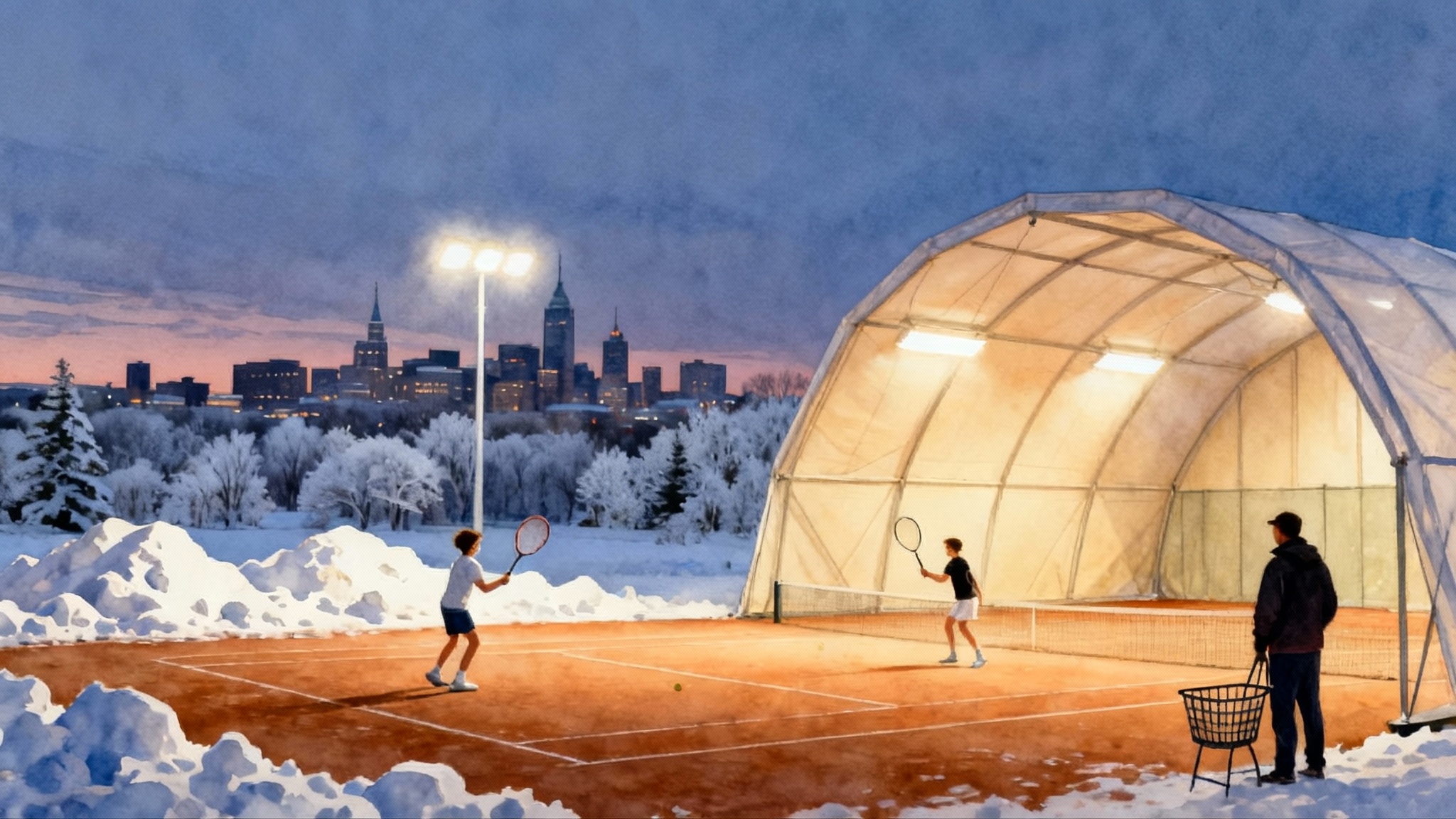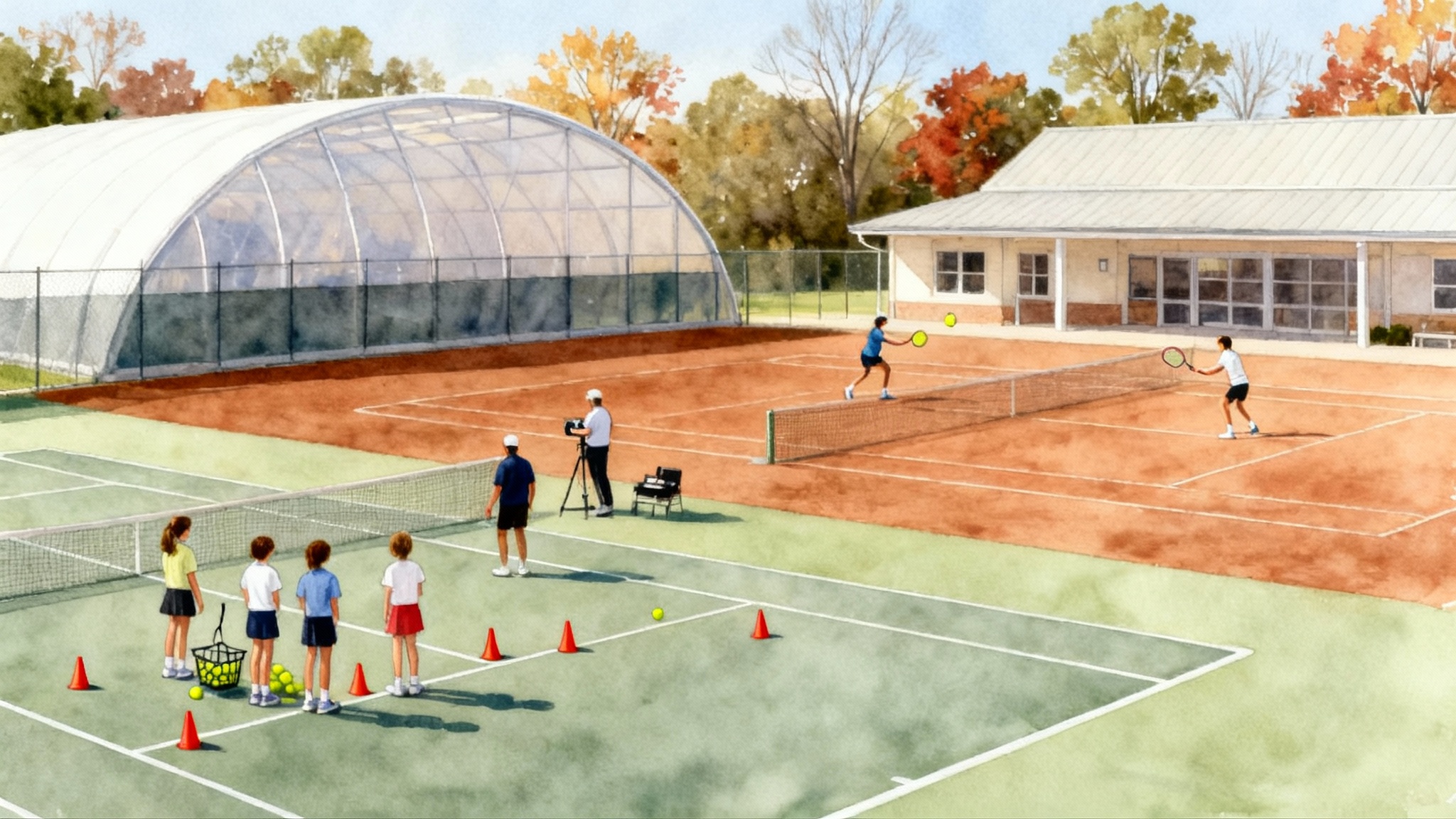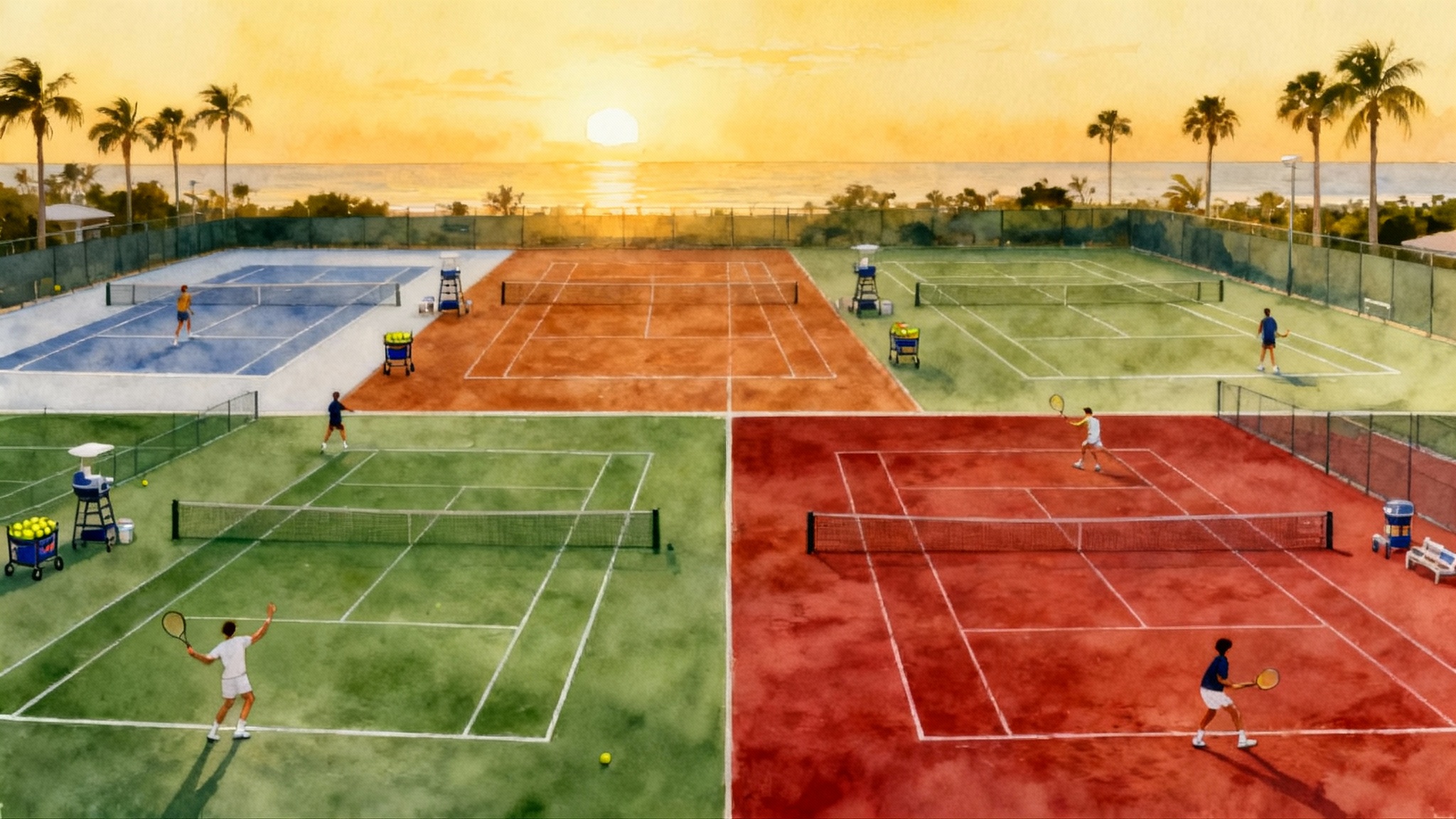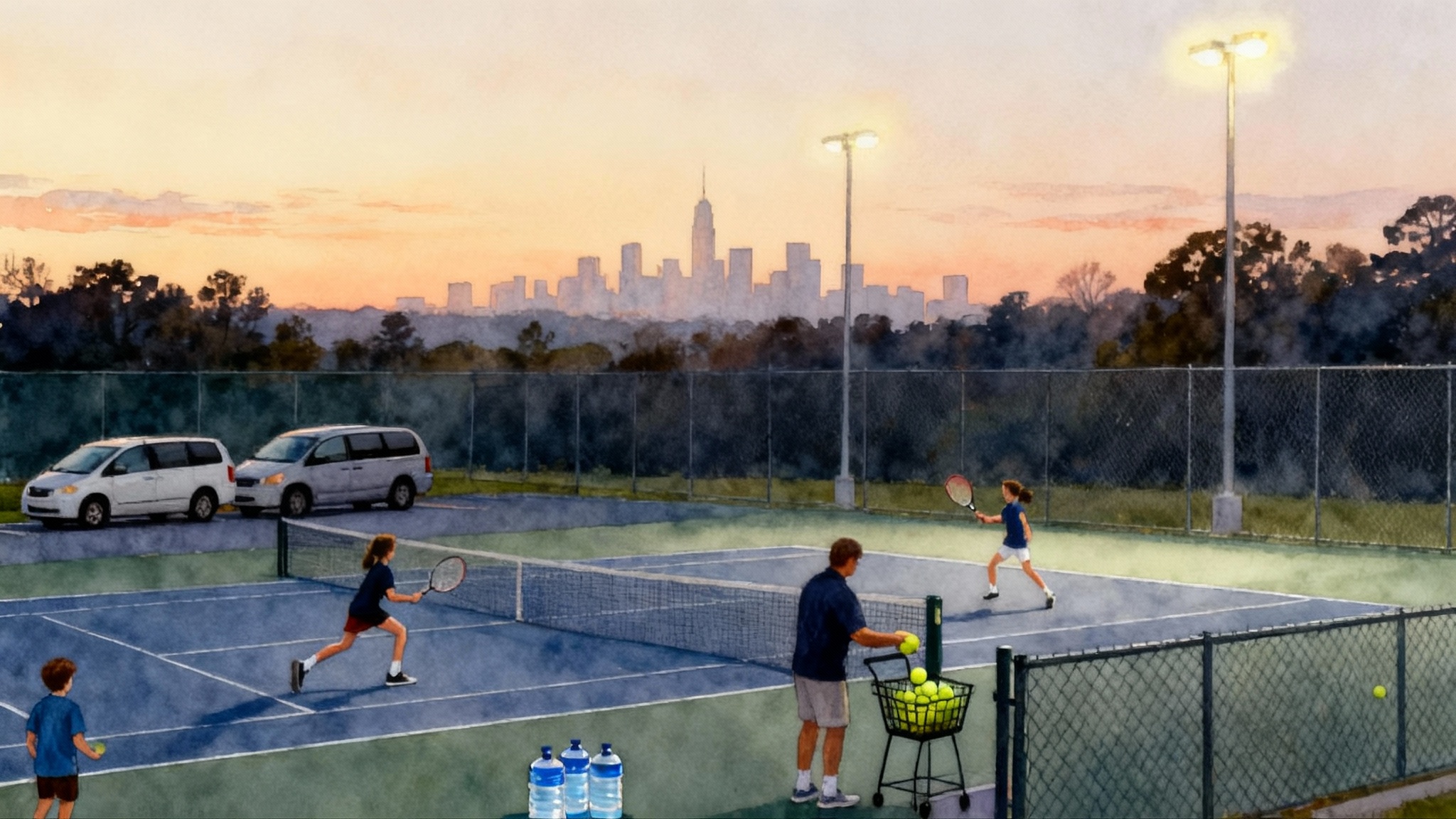Best Texas Tennis Academies 2025–2026: Austin, Dallas, Houston
A practical family guide to the top Texas tennis academies for 2025–2026. Compare boarding versus day models, coaching pedigree, UTR bands, training loads, indoor access, surfaces, nearby tournaments, and realistic costs.
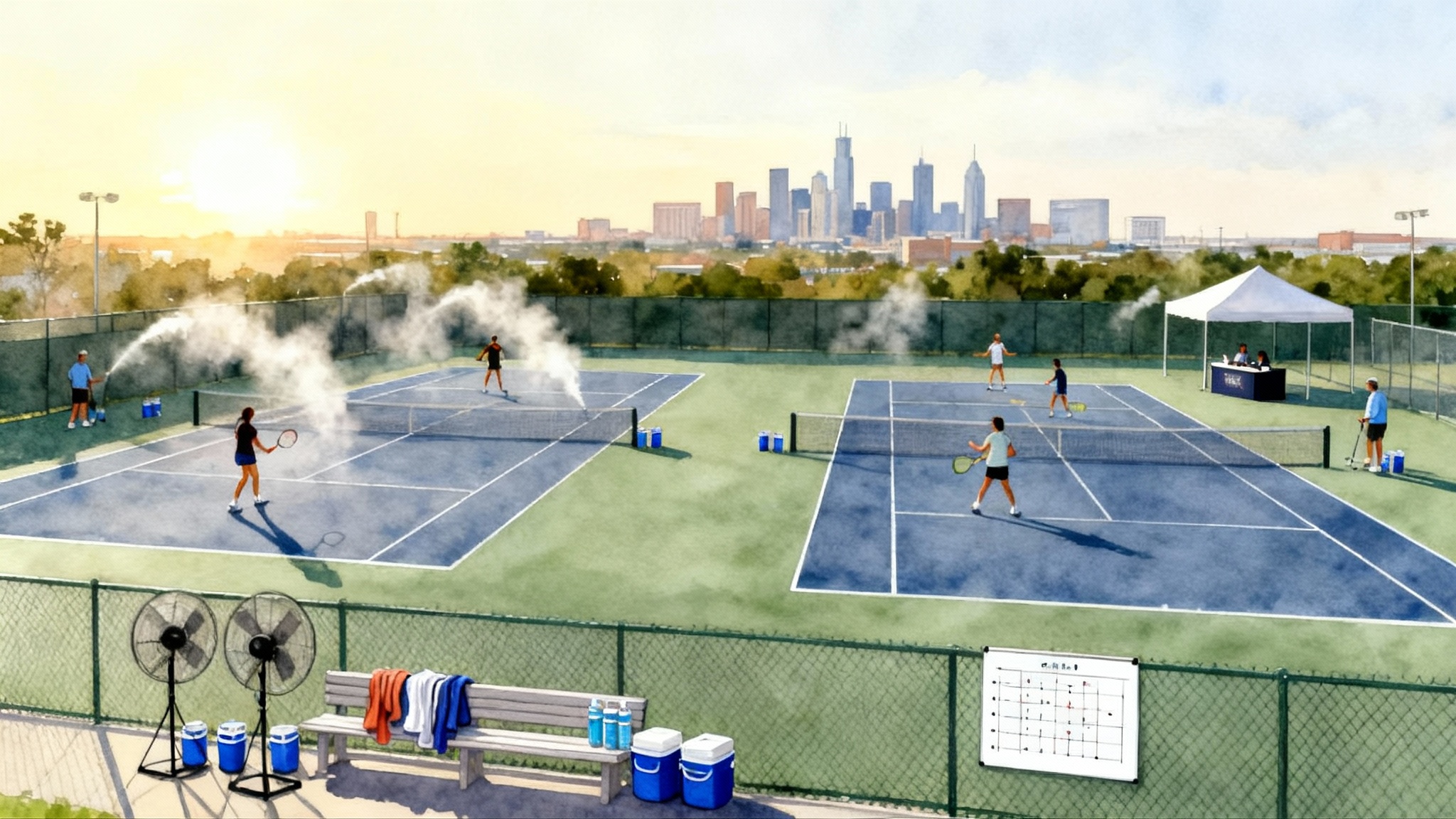
How to choose a Texas academy this year
Texas is a strong state for year‑round tennis, but it brings real tradeoffs for families. The distances are large, the summer heat is serious, and program models range from full boarding to after‑school day tracks. This guide compares the most established options in Austin, Dallas Fort Worth, Houston, and San Antonio, with clear signals you can verify on a visit and a short list of questions to ask. If you are also comparing other hotbeds, see our Florida academy guide 2025–2026 and Southern California academies 2025–2026.
Throughout, we refer to Universal Tennis Rating, often shortened to UTR, which places players on a 1 to 16 scale. If you are new to it, start with this primer for a Universal Tennis rating overview. We also mention the United States Tennis Association, shortened here as USTA, which governs most junior tournaments.
What to compare side by side
Use these eight lenses to evaluate any Texas program in 2025–2026:
- Boarding versus day model: Full‑time residential programs create more volume and independence. Day academies can be more flexible and cost‑effective, especially if school load is heavy.
- Coaching pedigree: Look for lead coaches who have placed players into top college programs or developed professional tour‑level athletes. Ask for names, years, and what level those players reached.
- College placement signals: Ask for a list of the past three graduating classes with destinations and roster links. The best programs share this openly and can explain the progression from 14 to 18 under pressure.
- UTR bands served: Healthy groups have at least three to five players within one UTR point of your child. Ask to see the current ladder distribution rather than a single top name.
- Weekly training and fitness load: Clarify hours on court, match‑play blocks, and off‑court strength, mobility, and injury prevention. Look for session quality and periodization, not just big numbers.
- Summer heat and indoor access: From late May through September, heat management is part of the plan. Ask about shade, ice, water, modified hours, and backup courts with air support or full indoor coverage.
- Surface mix: Texas is primarily hard court. Programs that add clay or use slower courts can improve point construction and reduce joint stress during heavy blocks.
- Tournament density within 60 to 90 minutes: Weekend travel time matters. Check the USTA schedule filters and recent draws, not just one marquee event.
The sections below apply these lenses to the leading programs in each metro.
Austin: Austin Tennis Academy
Austin Tennis Academy is the city’s anchor for serious juniors who want strong coaching without leaving home. The program runs robust after‑school and daytime tracks, with add‑ons for private coaching and tournament‑travel support.
- Model: Primarily day academy with year‑round blocks and strong summer programming. Families sometimes arrange local housing for short full‑time stretches during school breaks.
- Coaching pedigree: Long history of college placements into Division I and Division III programs. Expect staff who can show individual plans rather than one‑size‑fits‑all sessions.
- College placement signals: Ask for the last three graduating classes with destinations. In Austin, the network effect is real because alumni stay connected and hit through during breaks.
- UTR bands served: Healthy daily groups from mid‑level juniors to high national level. If your player is UTR 5 to 8, ask for the exact peer‑group hours. If your player is UTR 9 to 11 or higher, ask for designated match play with set scoring and video review.
- Weekly load: Typical day program totals 12 to 18 hours of court time plus two to four strength sessions. In summer blocks, loads can rise to 18 to 24 on court with careful heat timing.
- Heat and indoor access: True indoor courts are limited in the Austin area. Expect early morning and late evening sessions June through August. Ask about shade structures, cold towels, and mandatory hydration breaks.
- Surface mix: Mostly hard courts. Some coaches incorporate lower‑pressure balls or slower courts for pattern training to mimic clay tempo.
- Tournament density within 60 to 90 minutes: Frequent USTA events in Austin and San Antonio, with additional options in New Braunfels, Temple, and Waco.
- Realistic costs: Day tracks often fall between 1,200 and 2,200 dollars per month for group training, with additional private lessons at 120 to 180 dollars per hour. Summer camps typically range from 800 to 1,400 dollars per week depending on hours.
Who thrives here: Motivated students balancing strong academics with rising competition. Families who want daily structure, quality hitting partners, and measured volume without boarding.
San Antonio and the Hill Country: John Newcombe Tennis Ranch
John Newcombe Tennis Ranch, known to many as Newks, sits in New Braunfels between San Antonio and Austin. It is Texas’s most visible boarding model, with a deep tradition, team culture, and a campus that makes it easier for younger athletes to live the routine.
- Model: Full‑time boarding with academic support options, plus visiting and summer blocks. Day students from the area can also train.
- Coaching pedigree: Longstanding pipeline of college placements and a culture that emphasizes accountability and team standards. Parents usually cite structure and match‑play volume as strengths.
- College placement signals: Request a sport‑specific sheet with recent classes and rosters. Ask how many each year reach Division I, and how many move to Division II, Division III, or NAIA. What matters is the fit between player profile and placement result.
- UTR bands served: Broad spectrum from developing players through national level. For a UTR 7 to 9 athlete, the depth of opponents within a point on the ladder is a key advantage. For UTR 10 to 12, ask for consistent daily hitting with peers at or just above your level and video breakdowns of practice sets.
- Weekly load: Boarding schedules can reach 20 to 28 hours on court in peak phases, with four to six strength and mobility sessions, recovery protocols, and assigned study hall.
- Heat and indoor access: No full indoor complex on site. Workarounds include earlier start times, shaded rest stations, ice baths, and occasional off‑site indoor usage when available. Ask to see the summer day plan and wet‑bulb thresholds for stop or modify decisions.
- Surface mix: Primarily hard courts with limited slower court options used for pattern training and point construction.
- Tournament density within 60 to 90 minutes: Dense calendar from San Antonio to Austin. Boarding simplifies weekend travel because groups can roll together to events and support each other courtside.
- Realistic costs: Full boarding typically runs from the mid 40,000s to low 60,000s per academic year depending on room and board details, academics, and travel add‑ons. Short blocks are prorated by week or month.
Who thrives here: Players who want a structured, immersive environment, predictable routine, and ready‑made peer group. The program suits families who want independence training before college.
Dallas Fort Worth: Brookhaven and T Bar M
Dallas Fort Worth is the deepest metro in Texas for indoor backup, large club ecosystems, and frequent tournaments. Two names stay near the top for serious juniors: Brookhaven and T Bar M.
Brookhaven
- Model: Strong day academy with morning, after‑school, and performance tracks, plus private coaching. The club setting brings league play and broad hitting‑partner pools.
- Coaching pedigree: Staff with long years on court and a reputation for advancing players through junior levels into college rosters.
- College placement signals: Ask for a breakdown of the last three senior classes and how many trained primarily at Brookhaven versus split time. Clarify how coaches coordinate with high school teams during season.
- UTR bands served: From foundational players to high national level. Ensure there is a properly matched pod for UTR 9 to 11 and a plan for daily performance sets.
- Weekly load: Commonly 12 to 18 hours on court for day athletes during the school year, 18 to 24 during summer blocks, with three to five strength or movement sessions.
- Heat and indoor access: Dallas has more true indoor courts than Austin or San Antonio. Brookhaven access to covered or indoor backup reduces weather risk and allows predictable session times.
- Surface mix: Mostly hard courts with speed variety across the complex.
- Tournament density within 60 to 90 minutes: Very high. Dallas Fort Worth hosts many USTA and Universal Tennis events, which lowers travel time and lets players compete more often at the right level.
- Realistic costs: Day programs often range from 1,400 to 2,400 dollars per month for performance tracks, with privates often in the 130 to 180 dollars per hour band.
Who thrives here: Players and families who want consistent pods at every level, access to indoor backup, and a large local tournament calendar.
T Bar M
- Model: Performance‑oriented day academy integrated within a private club environment. Offers clear pathways from junior development to high performance, with small group and private coaching.
- Coaching pedigree: Well known for structured practices, fitness integration, and frequent match play. Alumni lists include college rosters across all divisions.
- College placement signals: Ask for the recent placement roster and the share of players who reached their targeted division. Good programs will discuss the why behind each placement, not just the logo.
- UTR bands served: From mid‑level competitive to top regional. For UTR 10 to 12, ask about a consistent same pod and how often those players spar with slightly higher UTR athletes.
- Weekly load: 12 to 18 hours on court during school‑year blocks, rising to 18 to 24 during summer, with three to five strength and movement sessions.
- Heat and indoor access: Dallas Fort Worth’s indoor coverage is a safety valve June through August. Ask how often the program shifts indoors during triple‑digit days and how they adapt fitness sessions.
- Surface mix: Predominantly hard courts. Some slower courts are used for pattern and point‑construction blocks.
- Tournament density within 60 to 90 minutes: Similar to Brookhaven, very high.
- Realistic costs: Comparable to other Dallas Fort Worth performance programs, with group fees in the 1,400 to 2,500 dollars per month range and private lessons often 140 to 190 dollars per hour.
Who thrives here: Athletes seeking intensity, structure, and a steady stream of well‑matched sparring partners.
Houston: leading programs to know
Houston is a giant metro with a strong history of tennis and a wide spread of clubs. Rather than one dominant brand, families will find several strong programs clustered in the west, northwest, and The Woodlands areas. Ask for a tour and watch a session before committing.
- Model: Primarily day academies, with many offering both after‑school and daytime performance blocks. Short‑term intensive blocks are common during school breaks.
- Coaching pedigree: Houston’s bench is deep, with former college players and tour‑level sparring partners on court. Look for staff who can discuss periodization, not just rally speed.
- College placement signals: Request recent placement lists and ask for contact with two families who navigated recruiting in the last two years.
- UTR bands served: Healthy pods from UTR 4 to 12+. If your player is UTR 6 to 8, ask about match play with timed sets to reduce wait time between points. For UTR 10 to 12, ask about close‑level pods and whether those athletes also scrimmage with adults during certain sessions.
- Weekly load: 12 to 18 hours during school‑year blocks, 18 to 24 in summer, with three to five strength sessions. Many programs partner with external strength coaches for movement and injury prevention.
- Heat and indoor access: True indoor is limited, but you will find covered courts, fans, and misting systems at several clubs. Programs commonly shift to early morning and evening in the summer months.
- Surface mix: Mostly hard courts. Some facilities maintain slower courts to vary tempo and reduce pounding during heavy weeks.
- Tournament density within 60 to 90 minutes: Very strong, with frequent USTA and Universal Tennis events spread across the metro and into College Station and the Gulf Coast.
- Realistic costs: Similar to Austin, many performance tracks run 1,300 to 2,300 dollars per month, with private lessons often 130 to 180 dollars per hour. Expect additional tournament‑coaching fees on travel weekends.
Who thrives here: Players who want big‑city depth, many events, and a variety of coaches without committing to boarding.
Heat, health, and sustainable volume
Texas summer is not a character test, it is a planning test. Ask each academy for:
- A written heat policy that uses wet‑bulb or heat‑index thresholds.
- A sample summer day schedule with earlier start and later finish blocks.
- Shade and cooling measures, water and electrolyte protocols, and staff training for heat illness.
- Strength adjustments in hot weeks, with more mobility, core, and low‑impact work.
Sustainable training means stacking quality sessions, not just counting hours. Look for a plan that builds a heavier block, then deloads before tournament pushes. For a West Coast example of a focused adult tune‑up, see Santa Cruz High‑Performance Tennis Academy.
What realistic costs look like
Families sometimes get surprised by add‑ons. Build your budget using three buckets:
-
Training tuition: Day performance tracks are commonly 1,200 to 2,500 dollars per month in the large metros. Boarding programs typically run from the mid 40,000s to low 60,000s per academic year.
-
Private coaching and fitness: On‑court privates often run 120 to 190 dollars per hour in major Texas cities. Small‑group fitness and movement commonly adds 200 to 400 dollars per month.
-
Competition and travel: Entry fees, coach travel stipends, hotel, and meals for out‑of‑town events. A busy month with two competitive weekends can add 600 to 1,500 dollars depending on distance.
Ask about sibling discounts, school partnerships, and need‑based aid. Many programs will help a driven player who shows commitment and a healthy attitude.
Tournament density and planning
Texas is blessed with frequent weekend events. Before you commit, map the next three months of tournaments that match your player’s level. Use the USTA tournament search to filter by level, surface, and proximity, which helps keep travel reasonable and confidence growing.
Aim for one to two competitive weekends per month during school and two to three during summer, with training weeks that focus on the specific patterns needed for the next event.
For adult players and short training blocks
Many of these Texas academies and clubs also serve adults well.
- Immersion weekends: San Antonio and the Hill Country are known for adult immersion camps that pack four to six sessions over two to three days, with live ball, serve clinics, and doubles patterns.
- Club performance clinics: Dallas Fort Worth clubs run strong live ball and point‑construction sessions for adults, often with access to indoor backup during the hottest weeks.
- Private tune‑ups: In Houston and Austin, schedule a three to five day block with two hours on court in the morning and one hour of video analysis or a serve and return lab in the afternoon.
For adults returning to competition, mix two to three days of intensive training with a local Universal Tennis or USTA league match, then take two recovery days before the next push.
Visit smart: the questions that matter
Bring this short checklist when you tour any academy in Texas:
- What is the exact peer pod for my player’s UTR and age, and when do they practice together each week?
- How many hours of structured, scored match play does this pod get per week, and who films it?
- What is the heat policy, and how did you modify the schedule last July and August?
- How do you integrate strength, mobility, and prevention for shoulders, hips, and lower back?
- Show me the last three years of college placements with rosters. What did you learn from the placements that did not work out?
- What is the realistic all‑in monthly cost in a typical school month and in a busy summer month?
If the answers are specific, you are in the right place. If the answers are only slogans, keep looking.
Two sample decisions, step by step
Scenario 1: UTR 7 rising freshman in Austin with strong academics
- Goal: Raise UTR to 8.5 by summer and target realistic Open‑level draws.
- Fit: Austin Tennis Academy day track with three private sessions per month and one or two weekend events each month in Austin or San Antonio.
- Plan: Twelve to fifteen hours on court weekly during school, three strength sessions, and a focus on serve‑plus‑one pattern. Heat plan for June through August with earlier starts.
- Budget: 1,600 to 2,200 dollars per month for training and privates, plus event and travel costs.
Scenario 2: UTR 10 junior in Houston seeking more match volume and college traction
- Goal: Raise UTR to 11.5 and log twenty match wins at the right level before fall recruiting calls.
- Fit: Performance day academy with a peer pod of UTR 9.5 to 11.5, two video‑scored practice sets per week, and a tournament every other weekend within ninety minutes.
- Plan: Fifteen to eighteen hours on court, three to four strength sessions, and monthly serve‑plus‑return benchmark tests. Two short travel events to Dallas Fort Worth for deeper draws.
- Budget: 1,800 to 2,400 dollars per month for training and privates, with event travel adding 800 to 1,200 dollars in busy months.
Bottom line
Texas gives you choice and volume. Austin Tennis Academy offers a strong day model with thoughtful coaching and academic balance. John Newcombe Tennis Ranch delivers a true boarding experience with structure and built‑in match play. In Dallas Fort Worth, Brookhaven and T Bar M provide depth, indoor backup, and frequent competition. Houston’s leading programs give you a big‑city network and a steady calendar.
Visit, watch an entire session, and ask the hard questions. Choose the peer group and plan that your player will follow on the hottest days of July, not just the cool days of October. That decision pays off in healthier training, better habits, and results that hold up when the score gets tight.
